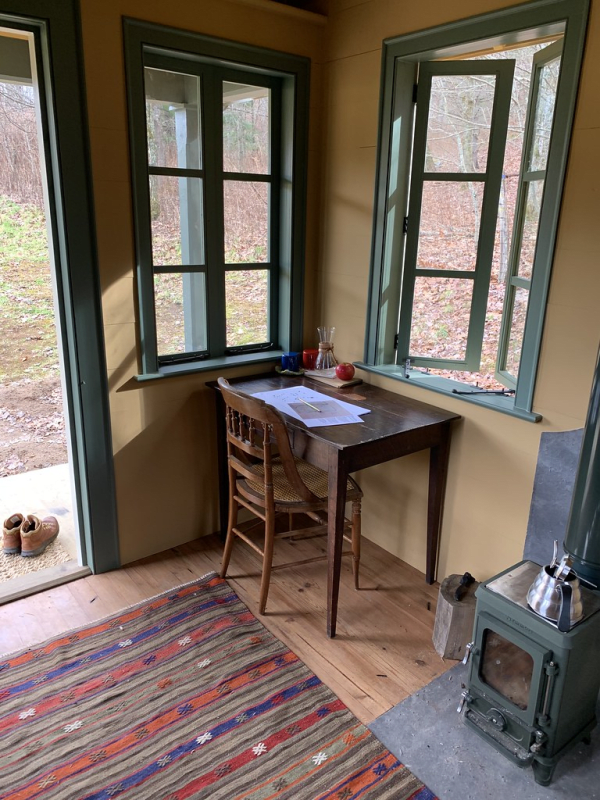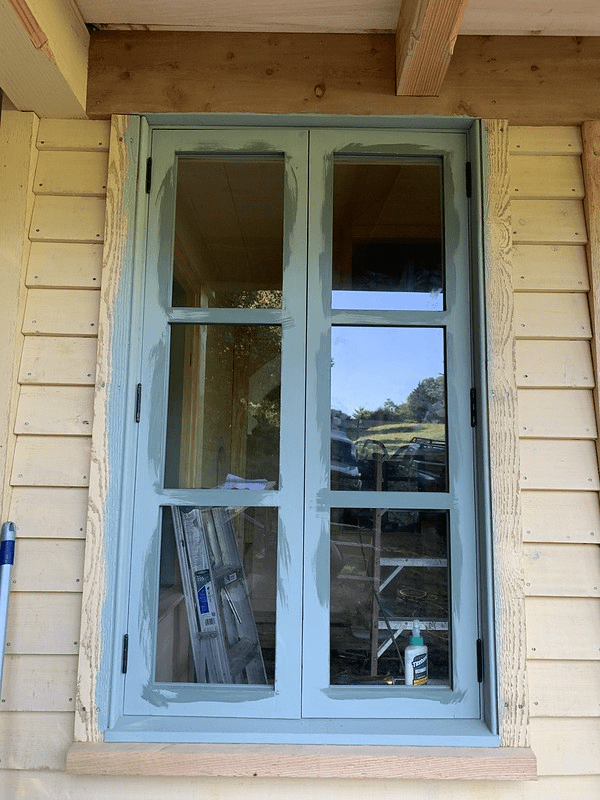Geoff_G
Structural
- Dec 28, 2020
- 3
I found my way here via a google that brought me to this thread.
I am building a cottage in a high elevation area in the North Carolina mountains where the code requires that windows be certified to a performance grade of 50 (PG50). The bulk of our window package calls for standard/readily available windows that come with the PG50 certification, but the plans also call for six small (i.e. 17"w x 36"h) "push out" all-wood single casements and two similar french (double) casements. Window manufacturers can make these casements as a custom order and certify that they adhere to the county's requirements, but the cost is painfully prohibitive.
For a different project, my cabinet maker made several windows for me (pictured) that are similar to the casements I'd like to install in this cottage. Windows such as these, made by my cabinet maker, would be far more affordable (even with more substantial sashes and tempered glass) than the quotes I received for custom windows made by a manufacturer. Unfortunately, without any sort of certification, the inspector wouldn't be able to approve them.
The inspector has said that, provided I have a NC structural engineer "sign off on them", I can use whatever windows I want. Because the cost difference is so great between custom windows provided by a manufacturer and what I could make locally, it's worth it to me to explore this.
Any advice on how I might satisfy the county's wind load requirements while building my own windows locally? I suppose I'm looking for an engineer who could consult on a window design and certify that it will meet the county's requirements, but I don't even know if that's a thing that structural engineers can do! I appreciate any suggestions.


I am building a cottage in a high elevation area in the North Carolina mountains where the code requires that windows be certified to a performance grade of 50 (PG50). The bulk of our window package calls for standard/readily available windows that come with the PG50 certification, but the plans also call for six small (i.e. 17"w x 36"h) "push out" all-wood single casements and two similar french (double) casements. Window manufacturers can make these casements as a custom order and certify that they adhere to the county's requirements, but the cost is painfully prohibitive.
For a different project, my cabinet maker made several windows for me (pictured) that are similar to the casements I'd like to install in this cottage. Windows such as these, made by my cabinet maker, would be far more affordable (even with more substantial sashes and tempered glass) than the quotes I received for custom windows made by a manufacturer. Unfortunately, without any sort of certification, the inspector wouldn't be able to approve them.
The inspector has said that, provided I have a NC structural engineer "sign off on them", I can use whatever windows I want. Because the cost difference is so great between custom windows provided by a manufacturer and what I could make locally, it's worth it to me to explore this.
Any advice on how I might satisfy the county's wind load requirements while building my own windows locally? I suppose I'm looking for an engineer who could consult on a window design and certify that it will meet the county's requirements, but I don't even know if that's a thing that structural engineers can do! I appreciate any suggestions.


